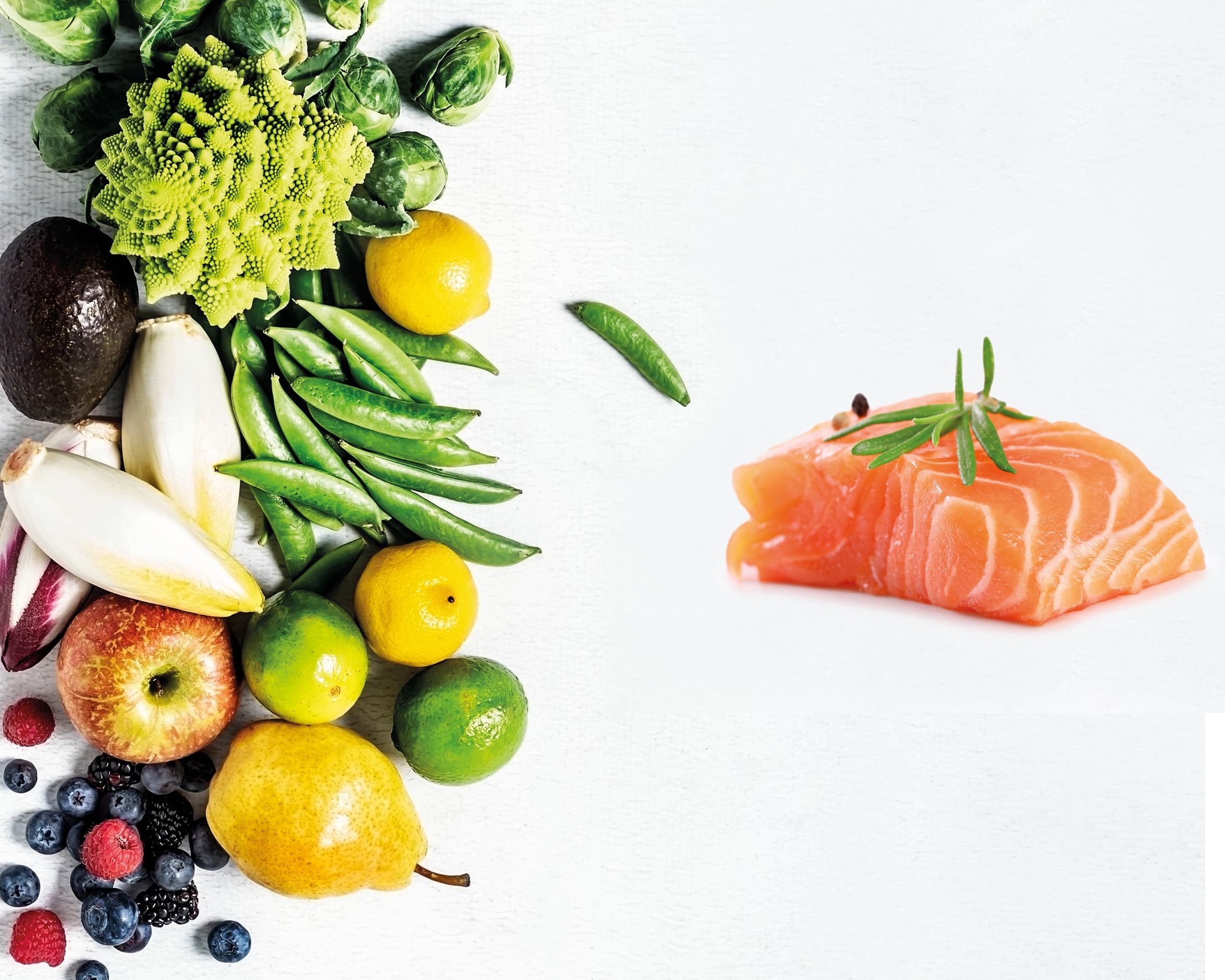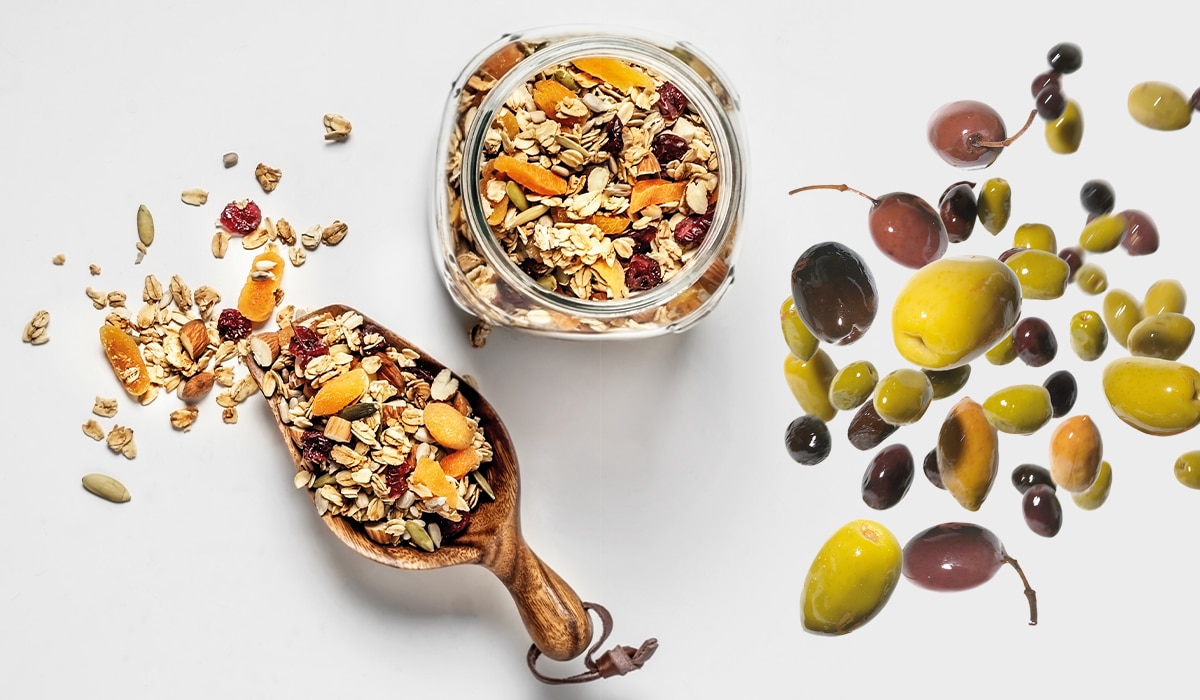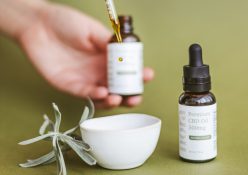Let’s eat to beat cholesterol! Diet can play an important role in lowering your cholesterol. Joanna Hall highlights the foods we should be piling on our plates.
Everyone has cholesterol in their blood – this soft, fatty substance plays an important role in the creation of cell membranes, some hormones and even bile. But too much increases the risk of having a heart attack or a stroke. The good news is that a few tweaks to your diet can have a major impact on your level of risk.
HIGH-FIBRE FOODS
Soluble fibre found in fruits, vegetables, dried beans, lentils and oats can lower ‘bad’ LDL cholesterol. This type of fibre is soft and sticky – it easily binds to cholesterol, which slows or prevents it from being absorbed into the blood.
‘Unprocessed, raw oats are a great choice,’ advises Dr Catherine Itsiopoulos, a leading dietetics researcher in the study of the Mediterranean diet. ‘You can eat them for breakfast, or add them to recipes for healthy muffins or bread.’ Psyllium, which contains both soluble and insoluble fibre, is another source that can be added to cereals. From the fruit world, choose berries.’ They are good all around where heart disease is concerned,’ says Dr Itsiopoulos. ‘Besides containing soluble fibre, berries are also rich in antioxidants, which help to prevent bad cholesterol from blocking the arteries.’
HOW MUCH?
Men should be eating 30g and women 25g of fibre a day for overall good health. As part of that total, and to help lower cholesterol, aim for a daily cup of oats, which provides 2g of soluble fibre and 4g of total fibre, as well as a cup of berries, which provides 1g of soluble fibre and 4g of total fibre.

OMEGA-3 FATTY ACIDS
These fatty acids can be drawn from plant- and animal-based products. Fish oil is known as a heart-disease fighting superfood because of its high levels of omega-3. ‘This is the healthiest type of fat you can have in your diet,’ says Dr Rob Grenfell, an international expert on heart health. ‘It competes against bad cholesterol, and doesn’t have the negative effects of other unhealthy fats, such as building up plaque in blood vessels. It also reduces the stickiness of the blood, which lowers the risk of clots.’ Oily fish (such as salmon, tuna and herring) and other fish (like flathead and barramundi) are good sources of omega-3s.
Don’t discount the omega-3s found in nuts and seeds. ‘The highest concentration is found in nuts or seeds such as flaxseeds or linseeds. Oils like canola or linseed are also a good option,’ says Dr Itsiopoulos. Chia seeds are packed full of goodness: not only do they contain omega-3 fatty acids, but they are also high in fibre and antioxidants. ‘Add linseeds and chia seeds to cereal,’ advises Dr Itsiopoulos. ‘Use canola oil when cooking, stir-frying or drizzling on salads, and walnuts can be eaten on their own or chopped up and added to muesli.’
HOW MUCH?
To reduce your heart disease risk, aim to eat around 500mg of fish oil a day. This can be drawn from two or three servings of oily fish a week at 150g per serving, plus fish oil capsules. If you already have heart disease, increase this amount to 1 000mg a day. Nuts are high in kilojoules, so eating a handful daily is enough, especially if you are watching your weight. With chia seeds and canola oil, aim for a tablespoon of each per day in cooking or adding to foods.
OLIVES
When it comes to cholesterol, the ratio between the LDL and HDL is an important predictor for heart disease. Olive oil contains a potent mix of antioxidants that can help lower the ‘bad’ LDL cholesterol, while leaving the ‘good’ cholesterol untouched. The simplest way to use olive oil is in cooking, says Dr Itsiopoulos. ‘Eating small amounts of olives is also an option, but you need to be careful as they are naturally high in salt, which can increase high blood pressure.’
HOW MUCH?
Olive oil is also high in kilojoules, so aim to use around two tablespoons a day, instead of other fats, in your diet.

FOOD FORTIFIED
Sterols are cholesterol-like chemicals that occur naturally in plants such as nuts, legumes and grains. It’s been shown that sterols can reduce blood cholesterol levels. Nonetheless, even a healthy diet cannot provide us with enough sterols to have an impact on cholesterol. As a result, some foods such as milk and cheese have been fortified with it. ‘They benefit the majority of people,’ says Dr Itsiopoulos, ‘and they are easy to add to your daily diet. If you use butter, for example, switch to a plant sterol-enriched spread, like margarine.’
HOW MUCH?
Spreads and cheeses are fats that can have an impact on your weight, but generally aim for two or three servings of plant sterol-fortified foods a day – you need to add just 2g of sterols to get the right effect. One serve equals two teaspoons of spread, one cup of low-fat milk, or a small tub of yoghurt.
Good vs Bad Cholesterol
Cholesterol has been divided into two camps, but what are the real differences between them? What you need to know first is that cholesterol is transported from the liver, where it’s made, to the rest of the body and back again. Low-density lipoproteins (LDL) are their ride out of the liver, and the high-density lipoproteins (HDL) carry them back again.
High levels of LDL cause more fatty build-ups, which in turn narrow the arteries and increase the risk of a heart attack or stroke. As a result, it’s called ‘bad’ cholesterol, according to the Heart and Stroke Foundation of South Africa. HDL, on the other hand, is called ‘good’ cholesterol because it removes any excess. A test will measure the amount of each one in your blood.
PHOTOGRAPHS: SHUTTERSTOCK, GETTY






